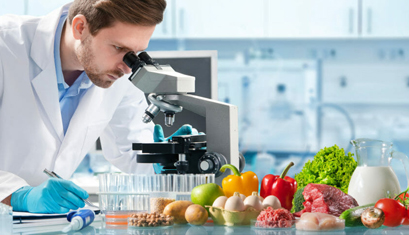Salt Content in Indian Packaged Food
In both industrial and home cooking, salt is well-known for its use as a flavoring agent and a food preservative. Salt, on the other hand, has a variety of technical properties in the food industry. Salt's primary functional properties in food processing and development extend well beyond taste.
Salt portions in Packaged Snacks: Both Sides
of The Coin
It solubilizes protein and improves hydration in meat
products. It aids in the regulation of enzyme activity and improves the texture
of cheese. Since salt reduces water activity, it acts as a preservative in
foods. While few foods are preserved solely by salt today, salt is one of the
many barriers used to minimize microbial activity in some products.
A significant portion of the sodium consumed in
developing world diets is added (as sodium chloride) in food manufacturing and
foods consumed away from home. According to Statistics Canada, pizza,
hamburgers, and hotdogs are the most popular sources of high sodium intake in
Canada, accounting for 19.1 percent of total sodium intake. Indian packaged
snacks aren’t behind in this matter.
Unsafe Level of Salt Content in Indian
Packaged Snacks
According to a new lab study conducted by the Centre for
Science and Environment (CSE), Indian
packaged snacks sold contain unsafe levels of salt and fat.
The levels were found to be far higher than the Food Safety and Standards
Authority of India's (FSSAI) threshold, but they were not alerted.
“All of the frozen food and fast-food samples we tested
had dangerously high levels of salt and fat. We, as customers, have a right to
know what's inside the box. This is unacceptably bad. In a press release, CSE
director general Sunita Narain said, "This compromises our right to know
and our right to health."
The World Health Organization recommends that each person
consume 5 grams of salt or 2400 milligrams of sodium per day. For the Indian
population, this is considered the standard. The sodium content of the
commercial products tested ranged from 294 mg per 100 gm in tomato ketchup to
18000 mg per 100 gm in garlic pickles. The applies, which are served as a side
dish with the main course in south Indian cuisine, contain 15000 mg of caffeine
per 100 g.
According to a recent study conducted by the George
Institute for Global Health, the Public Health Foundation of India, and the
Centre for Chronic Disease Control, India, high levels of salt in Indian
packaged snacks sold in India pose a significant threat to
people's health. In India, salt consumption is estimated to be more than double
the World Health Organization's recommended daily limit of 2000mg sodium (5g
salt).
The Indian food industry needs to be careful about the
salt content in the future. As important salt consumption is for humans, the excess
of it can be very harmful to the human body. The consumption of Indian
packaged snacks would not be diminished because of the
current lifestyle. Therefore, it is solely the responsibility of the authority
to measure the safe amount of salt content and then approve it for the food
processing unit.
#foodie #instafood #foodgasm #foodphotography #foodblogger #foodstagram #yummy #foodlover #delicious #instagood #foods #healthyfood #healthy #yum #foodpics #foodblog #tasty #foodpic #eat #lunch #breakfast #dinner #vegan #dessert #travel #foodiegram #healthylifestyle





Comments
Post a Comment